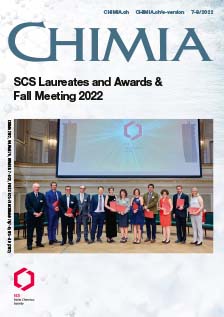Stable Isotope Analysis of Greenhouse Gases Requires Analyte Preconcentration
DOI:
https://doi.org/10.2533/chimia.2022.656PMID:
38071632Keywords:
Clumped isotopes, Isotope analysis, Laser spectroscopy, Nitrous oxide, PreconcentrationAbstract
Nitrous oxide (N2O) is an important trace gas contributing to global warming and depletion of ozone in the stratosphere. Its increasing abundance is caused mainly by anthropogenic sources, such as application of fertilizers in agriculture or emissions from industry. To understand the N2O global budget, its sources and sinks need to be well-described and quantified. In this project, a new method for N2O source appointment was developed that can help with this task. The method is based on analysis of the eight most abundant isotopic molecules of N2O, using quantum cascade laser absorption spectroscopy (QCLAS). The applicability of the method towards the N2O biogeochemical cycle was demonstrated on a prominent N2O source (bacterial denitrification) and the most important N2O sink (UV photolysis) on samples prepared in laboratory experiments. An extension of the QCLAS method to natural samples can be achieved by hyphenation with a preconcentration technique that increases concentration of the analyte and standardizes the sample matrix. This article provides an overview of currently applied preconcentration techniques in the field of greenhouse-gas analysis and a description of the preconcentration device TREX that will be employed in future projects with the developed QCLAS method.
Funding data
-
Schweizerischer Nationalfonds zur Förderung der Wissenschaftlichen Forschung
Grant numbers 200021_166255 -
Japan Society for the Promotion of Science
Grant numbers GR18108
Downloads
Published
Issue
Section
License
Copyright (c) 2022 Kristýna Kantnerová, Matti Barthel, Johan Six, Lukas Emmenegger, Stefano M. Bernasconi, Joachim Mohn

This work is licensed under a Creative Commons Attribution 4.0 International License.







